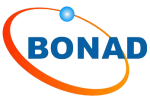Introduction
In today's interconnected global landscape, the alignment of product standards is essential for ensuring safety, compatibility, and marketability. Two prominent sets of guidelines that play a significant role in standardization and conformity across various sectors are EN (European Norm) and IEC (International Electrotechnical Commission) standards. This article delves into the definitions and significance of EN and IEC standards, highlighting their scopes and roles in the international marketplace.
EN Standards: Unifying European Specifications
EN standards are developed and maintained by the European Committee for Standardization (CEN) in collaboration with the European Telecommunications Standards Institute (ETSI). These standards aim to harmonize technical specifications and requirements across European countries, ensuring the standardization, interoperability, and safety of products within the European Union (EU).
Scope and Application
EN standards cover a wide range of industries, including mechanical engineering, construction, information technology, telecommunications, electrical equipment, and more. They provide guidelines on product safety, performance, quality, environmental impact, and compatibility. For manufacturers looking to sell products within the EU, adherence to EN standards is often a legal requirement.
Key Features
· Focus on European Markets: EN standards are crucial for businesses operating within the EU. They address specific needs of European economies by ensuring products meet safety and quality benchmarks set by EU regulations.
· National Implementation: EU member states adopt EN standards to maintain consistency across the European Economic Area (EEA). Each state integrates the EN standard into its national framework while preserving core requirements.
IEC Standards: Globally Recognized Electrotechnical Guidelines
IEC standards are formulated by the International Electrotechnical Commission (IEC), an organization dedicated to developing international standards in electrotechnology. These globally recognized standards play a vital role in ensuring uniformity, compatibility, and safety of electrical and electronic devices worldwide.
Scope and Application
IEC standards encompass a broad array of industries such as electrical engineering, electronics, telecommunications, power generation and distribution, renewable energy, medical devices, among others. They provide guidelines on safety, performance, functionality, interoperability, and environmental considerations. Compliance with IEC standards demonstrates a manufacturer’s commitment to product reliability, quality, and global competitiveness.
Key Features
· Global Relevance: IEC standards offer universally accepted guidelines that ensure interoperability across borders. Their global applicability facilitates trade by providing compatible and safe electrical products in diverse markets.
· Collaborative Development: IEC standards are developed through a consensus-driven process involving experts from various countries. This collaborative method ensures that these standards consider multiple perspectives and meet industry needs worldwide.
Conclusion
EN and IEC standards are crucial for promoting global trade and ensuring product safety. While EN standards primarily focus on harmonizing technical specifications within Europe, IEC standards have a broader international reach covering various industries globally. Compliance with these standards not only guarantees safety and performance but also enhances market access and consumer trust.
Manufacturers must stay updated on relevant EN and IEC standards applicable to their products to ensure compliance and competitiveness. Adhering to these guidelines signifies a commitment to high-quality production, regulatory conformity, and meeting international market expectations. Ultimately, harmonizing EN and IEC standards fosters seamless product integration across borders, promoting a global marketplace that values safety, reliability, and interconnectivity.

